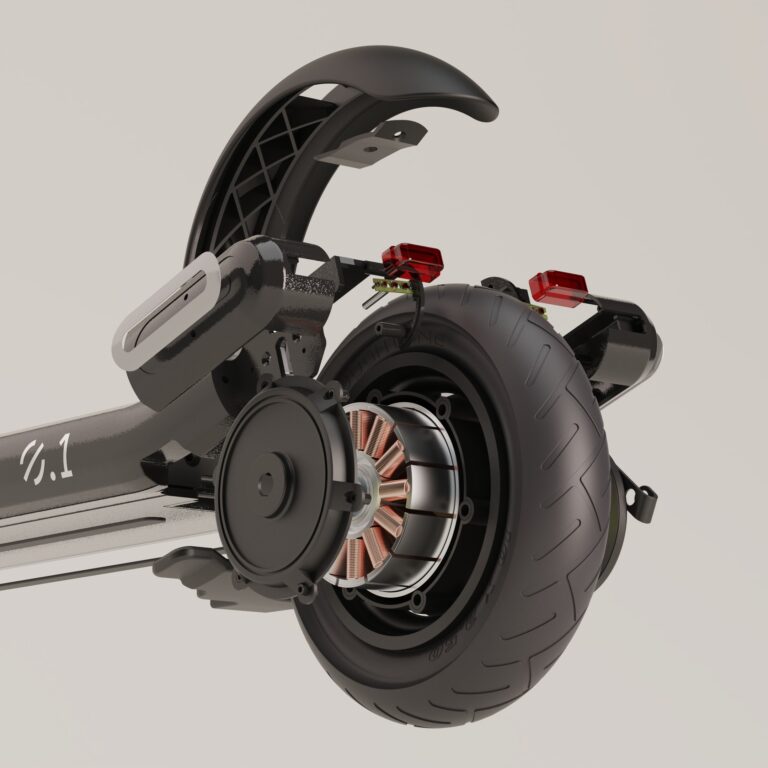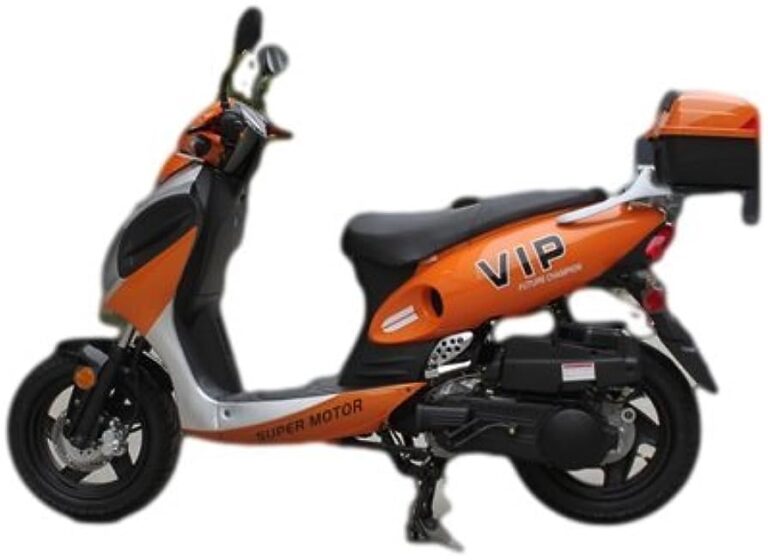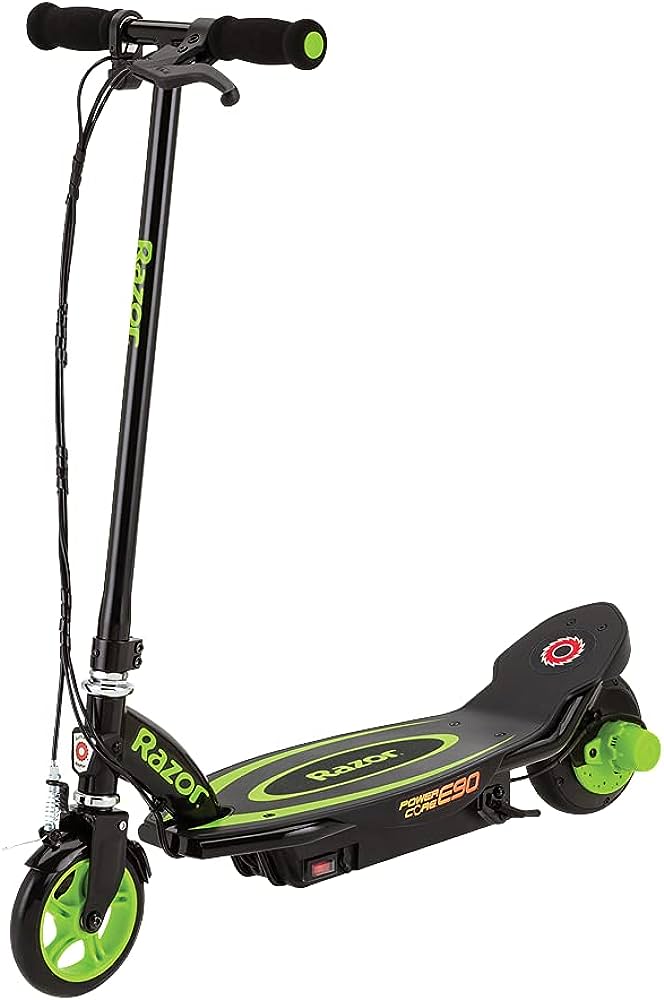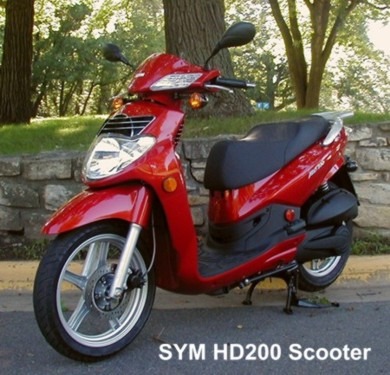E-Scooter Benefits: Unlock the Power of Efficient and Eco-Friendly Transportation
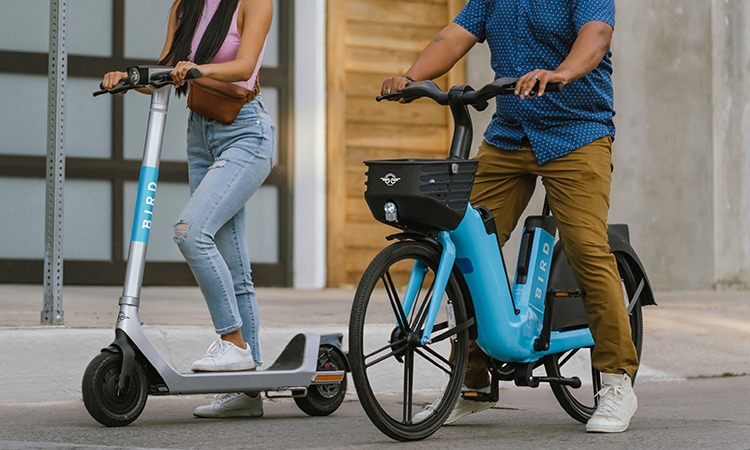
E-scooters offer numerous benefits, including eco-friendliness and cost-effectiveness. With the rise in concern for the environment and increasing traffic congestion, e-scooters provide a sustainable mode of transportation.
They are powered by electricity, thus reducing carbon emissions and minimizing air pollution. Additionally, e-scooters are an affordable alternative, saving both money and time by avoiding the need for fuel and reducing travel time in congested areas. These benefits make e-scooters an attractive choice for urban commuters, students, and anyone looking for a convenient and eco-friendly way to get around.
As the demand for green transportation continues to grow, e-scooters are becoming an increasingly popular option worldwide.
Why E-Scooters Are The Future Of Commuting
Discover the future of commuting with e-scooters – an eco-friendly and convenient solution. Experience the benefits of efficient transport with zero emissions and easy maneuverability in crowded urban areas. Expect a smooth and enjoyable ride to your destination with e-scooters.
With the rapid advancements in technology, transportation is evolving at an astonishing pace. One mode of travel that has gained immense popularity in recent years is electric scooters, or e-scooters. Offering a range of benefits, e-scooters are poised to become the future of commuting.
Let’s explore why:
Eco-Conscious Commuting:
- Environmentally friendly: E-scooters are powered by electricity, emitting zero emissions during operation. This makes them a sustainable alternative to gas-powered vehicles, contributing to cleaner air and a healthier planet.
- Reduced carbon footprint: By choosing an e-scooter over traditional transportation methods, commuters actively participate in reducing their carbon footprint. With fewer cars on the road, traffic congestion and associated air pollution can be alleviated.
Cost Savings Compared To Traditional Transportation Methods:
- Lower fuel costs: E-scooters run on electricity, which is significantly cheaper compared to gasoline. Commuters can save a substantial amount of money on fuel expenses by opting for an e-scooter.
- Affordable maintenance: E-scooters have fewer moving parts compared to automobiles, translating into reduced maintenance costs. You’ll breathe a sigh of relief as routine maintenance won’t break the bank.
Efficient And Convenient Mode Of Travel:
- Time-saving: E-scooters allow commuters to navigate through busy city streets with ease. They can bypass traffic congestion and arrive at their destination quicker than traditional transportation methods.
- Last-mile connectivity: E-scooters bridge the gap between public transportation and a commuter’s final destination. They offer a convenient solution for the last leg of a journey, eliminating the need for long walks or expensive taxi rides.
Remember, the transition towards e-scooters is not just about embracing the latest trend; it’s about making a conscious choice towards a greener future. With the numerous benefits they provide, e-scooters are undoubtedly the future of commuting. So, why not join the movement and experience a more eco-conscious, cost-effective, and efficient way of getting around?
Reducing Traffic Congestion With E-Scooters
Reducing traffic congestion can be achieved through the utilization of e-scooters, offering benefits like a cost-effective and eco-friendly mode of transportation. With their compact size and maneuverability, e-scooters are a convenient solution for short distance travel, alleviating traffic congestion and reducing carbon emissions in urban areas.
E-Scooters As A Solution For Urban Transportation Challenges
E-scooters have emerged as a promising solution to address the ever-growing challenges of urban transportation. With their compact size, affordability, and eco-friendly nature, these electric scooters offer numerous benefits for both individuals and cities. Let’s delve into how e-scooters are reducing traffic congestion and transforming urban commuting.
Improving Traffic Flow And Reducing Commute Times
E-scooters play a crucial role in improving traffic flow and reducing commute times in dense urban areas. Here’s how:
- Convenient Mobility: E-scooters provide a convenient mode of transportation for short distance commutes, allowing riders to easily maneuver through congested city streets and bypass traffic jams.
- Last-Mile Connectivity: With their compact design, e-scooters bridge the gap between public transportation stops and final destinations, offering a seamless last-mile connectivity solution. This reduces the need for personal cars, further easing traffic congestion.
- Faster Journey Times: By utilizing dedicated bike lanes and pathways, e-scooter riders can bypass heavy traffic and reach their destinations faster. This not only saves time but also helps in reducing overall traffic congestion on the roads.
Taking The Strain Off Public Transportation Systems
E-scooters relieve the strain on public transportation systems, leading to better efficiency and reduced overcrowding. Here’s how:
- Balanced Ridership: E-scooters attract a significant number of riders who previously relied solely on public transport. By shifting some commuters to e-scooters, it reduces the overcrowding on buses, trains, and trams during peak hours.
- Enhanced Accessibility: E-scooters provide increased accessibility to areas with limited or no public transportation options. This ensures that people living in remote or under-connected neighborhoods have a reliable and convenient mode of transportation available.
- Lower Demand for Parking: As more people opt for e-scooters instead of private cars or rideshares, the demand for parking spaces decreases. This not only frees up space but also reduces traffic congestion caused by vehicles circling in search of parking spots.
E-scooters offer a viable solution to combat traffic congestion in urban areas. With their ability to improve traffic flow, reduce commute times, and alleviate the burden on public transportation, these electric scooters are transforming the way we navigate cities. As more cities embrace e-scooters and invest in the necessary infrastructure, we can expect to see a significant reduction in traffic congestion, making our cities more livable and sustainable.
The Environmental Impact Of E-Scooters
E-scooters offer a range of benefits including reduced carbon emissions and improved air quality in urban areas. Their electric-powered design helps to minimize the environmental impact compared to traditional transportation methods.
E-scooters have gained popularity worldwide as a convenient and eco-friendly mode of transportation. Their numerous benefits extend beyond personal convenience, affecting our environment positively. Let’s dive into the environmental impact of e-scooters and how they contribute to a greener and more sustainable future.
Lower Carbon Emissions Compared To Cars And Motorcycles
- E-scooters emit significantly lower levels of carbon emissions compared to cars and motorcycles, making them a greener alternative for short-distance trips.
- By using electric power instead of fossil fuels, e-scooters help reduce greenhouse gas emissions, mitigating the impact of climate change.
- The energy efficiency of e-scooters allows them to travel farther, using less energy and resulting in fewer carbon emissions.
Reduction In Air Pollution And Noise Pollution
- With e-scooters, air pollution from exhaust fumes is minimized since they run on electric batteries.
- By choosing e-scooters over cars or motorcycles, we can collectively reduce the release of harmful pollutants into the air, improving air quality in urban areas.
- Additionally, e-scooters generate significantly less noise pollution, contributing to quieter and more peaceful city environments.
Contributing To A Greener, More Sustainable Future
- The use of e-scooters encourages a shift towards sustainable transportation options, reducing dependence on fossil fuels and promoting the use of renewable energy.
- E-scooters grant individuals the opportunity to actively contribute to environmental conservation by opting for a mode of transport that aligns with their commitment to sustainability.
- As more people embrace e-scooters for their daily commute or short trips, the cumulative positive impact on the environment becomes more significant, leading to a greener and more sustainable future.
Overall, e-scooters offer substantial environmental benefits, including lower carbon emissions, reduced air and noise pollution, and contributing to a greener, more sustainable future. By choosing e-scooters as a transportation option, individuals can actively participate in creating a healthier and more environmentally friendly world.
Safety Measures For E-Scooter Riders
E-scooter riders can ensure their safety by following important measures such as wearing helmets, obeying traffic rules, and being mindful of pedestrians. These precautions help maximize the benefits of e-scooter use while minimizing potential risks.
E-scooters have gained immense popularity as a convenient and eco-friendly mode of transportation. However, it is crucial for riders to prioritize safety while enjoying the benefits of this modern innovation. By implementing proper safety measures, e-scooter riders can reduce the risk of accidents and injuries.
Let’s explore some essential safety practices that every rider should follow:
Importance Of Wearing Protective Gear
- Wearing a helmet: A helmet is the most crucial piece of protective gear for e-scooter riders. It provides essential head protection in case of accidents or falls.
- Elbow and knee pads: These protective gears safeguard riders from painful scrapes, bruises, and fractures in case of accidents or sudden stops.
- Sturdy footwear: Wearing closed-toe shoes with a firm grip is essential for maintaining control and preventing foot injuries.
- Reflective clothing: Wearing bright and reflective clothing helps improve visibility, especially during low-light conditions or at night.
Safe Riding Practices And Precautions
- Familiarize yourself with the e-scooter: Before hopping on an e-scooter, take the time to familiarize yourself with its controls, acceleration, braking systems, and turning radius. This will enhance your overall riding experience and help you avoid sudden accidents.
- Observe traffic rules: Always follow traffic rules, such as obeying traffic signals, using designated lanes, and yielding to pedestrians. This will not only protect you but also ensure a harmonious coexistence with other road users.
- Be cautious of your surroundings: Maintain constant awareness of your surroundings, including pedestrians, vehicles, and road conditions. Keeping a safe distance from others and adapting your speed to the environment will greatly reduce the risk of collisions.
- Practice smooth and controlled riding: Accelerate and decelerate slowly and gradually, avoiding sudden jerks. Smooth riding prevents accidental falls and increases your ability to respond to unexpected situations.
Advocating For Regulations And Infrastructure Improvements
- Push for regulations: Advocating for regulations that govern e-scooter usage will ensure a safer riding experience for everyone. Voice the need for speed limits, designated e-scooter parking, and responsible behavior while riding.
- Improve infrastructure: Encourage the development of dedicated e-scooter lanes, separate from regular traffic, that allow for convenient and safe riding. Additionally, well-maintained roads and regular inspection of e-scooters are essential for preventing accidents caused by infrastructure issues.
By prioritizing safety measures such as wearing protective gear, adhering to safe riding practices, and advocating for regulations and infrastructure improvements, e-scooter riders can enjoy their journeys while minimizing the risk of accidents and injuries. Remember, safety should always be a top priority when embarking on any e-scooter adventure.
Stay safe and enjoy the ride!
E-Scooters For Last-Mile Connectivity
E-Scooters provide a convenient and eco-friendly solution for last-mile connectivity, allowing users to easily navigate urban areas with ease. With their compact design and zero emissions, these electric scooters offer a cost-effective and efficient transportation option, reducing congestion and promoting a greener environment.
Bridging The Gap Between Public Transportation And Final Destinations
E-scooters have emerged as an innovative solution for tackling the last-mile connectivity problem in urban areas. By bridging the gap between public transportation and final destinations, these compact and agile vehicles offer a range of benefits that contribute to a seamless commuting experience.
Here’s how e-scooters enhance last-mile connectivity:
- Convenience at your fingertips: E-scooters provide a cost-effective and convenient mode of transportation for short distances. With just a few taps on a mobile app, users can locate and unlock e-scooters, saving precious time compared to walking to the nearest bus or train station.
- Flexible and time-efficient: E-scooters offer the flexibility to navigate through traffic congestion and crowded urban areas effortlessly. Commuters can zip through narrow streets and avoid delays, making their journey quick and efficient.
- Environmental friendliness: E-scooters are a sustainable choice for those looking to reduce their carbon footprint. Powered by electric motors, they produce zero direct emissions and contribute to cleaner air and reduced noise pollution in busy cities.
- Cost-effective solution: Compared to other means of transportation, e-scooters are an economical option for short-distance commutes. They eliminate the need for parking fees, fuel costs, and traffic charges, making them a practical choice for budget-conscious individuals.
- Accessible for all: E-scooters promote inclusivity by providing an accessible mode of transportation for individuals with limited mobility or those who prefer not to use other means of public transportation. With adjustable handlebars and a user-friendly design, e-scooters cater to a wide range of users.
Enhancing Accessibility In Urban Areas
In addition to addressing last-mile connectivity challenges, e-scooters play a crucial role in enhancing accessibility in urban areas. Here’s how they contribute:
- Expanding transportation options: E-scooters diversify the range of transportation options available, providing people with more flexibility to choose the most suitable mode for their needs. This increases accessibility for individuals who may not have access to private vehicles or face limitations with other means of transportation.
- Reducing congestion: By encouraging people to opt for e-scooters, cities can mitigate congestion on roads and reduce the strain on public transportation networks. This, in turn, leads to smoother traffic flow and shorter commute times for all commuters.
- Encouraging active lifestyles: Riding an e-scooter is not only a practical means of transportation but also a way to incorporate physical activity into daily routines. By encouraging active lifestyles, e-scooters contribute to improved health and well-being for individuals who may otherwise lead sedentary lives.
- Supporting the first and last mile: E-scooters complement public transportation by supporting the first and last mile of a commute. They bridge the gap between home or workplace and the nearest bus, tram, or train station, minimizing the distance traveled on foot or by other means.
- Promoting tourism: E-scooters offer an exciting way for tourists to explore cities, allowing them to effortlessly navigate popular tourist spots and attractions. This enhances the overall visitor experience and boosts tourism in urban areas.
E-scooters have undoubtedly revolutionized last-mile connectivity by seamlessly integrating with existing transportation networks. By enhancing accessibility, minimizing congestion, and offering a sustainable mode of transportation, e-scooters have become a game-changer in urban commuting.
E-Scooters And Health Benefits
E-Scooters provide numerous health benefits, including increased physical activity, improved cardiovascular fitness, and reduced carbon emissions. These electric-powered vehicles are a convenient and eco-friendly mode of transportation that promotes a healthier lifestyle.
Incorporating Physical Activity Into Daily Routines:
- Commuting on an e-scooter is an excellent way to incorporate physical activity into your daily routine. It allows you to engage in exercise without having to dedicate extra time for workouts.
- Riding an e-scooter involves the use of muscles, particularly in the legs, helping to improve strength and endurance. It can also work as a gentle form of cardio exercise.
- By choosing an e-scooter for short distance travel, you can squeeze in a quick workout without even realizing it. Plus, it beats being stuck in traffic or relying solely on public transportation.
- E-scooters are practical and efficient for running errands, making it convenient to add physical activity to your day-to-day life.
- Adding physical activity to our daily routines brings numerous health benefits, such as improved cardiovascular health, increased energy levels, and enhanced mental well-being.
Boosting Mental And Physical Well-Being:
- Riding an e-scooter can have a significant impact on both mental and physical well-being.
- Physical exercise has been linked to the release of endorphins, which are the body’s natural feel-good hormones. When riding an e-scooter, endorphins are released, resulting in an instant mood boost.
- This physical activity can also reduce stress and anxiety levels, helping you feel calmer and more relaxed.
- Regularly using an e-scooter promotes overall fitness and can lead to weight loss or maintenance, improving both physical health and body image.
- Ride-sharing e-scooters have gained in popularity, allowing people to explore their surroundings, enjoy fresh air, and take in the scenery. This exposure to outdoor environments enhances mental well-being and reduces the risk of vitamin D deficiency.
Alternative To Sedentary Modes Of Transport:
- E-scooters serve as an appealing alternative to sedentary modes of transport, such as cars or buses.
- Easy to operate and maneuver, e-scooters provide an active means of getting around, rather than being seated for prolonged periods.
- Traditional motorized transport is often associated with a sedentary lifestyle, contributing to various health risks, including obesity and cardiovascular disease.
- Opting for e-scooters as a means of transportation promotes an active lifestyle and reduces the time spent sitting, resulting in a healthier way of getting from point A to point B.
- By replacing sedentary modes of transport with e-scooters, individuals can incorporate physical activity into their daily lives effortlessly.
Remember, riding an e-scooter not only serves as an efficient mode of transportation but also offers surprising health benefits. From boosting mental and physical well-being to incorporating physical activity into your daily routines, e-scooters are an excellent choice for both your health and the environment.
So, why not hop on an e-scooter and enjoy the ride towards a healthier lifestyle?
E-Scooter Sharing Programs And Their Impact
E-scooter sharing programs provide numerous benefits, such as reducing congestion and pollution, promoting sustainable transportation options, and increasing accessibility in urban areas. These programs have a positive impact on the environment and offer a convenient way for individuals to get around their city.
Escooters are revolutionizing the way we commute and are making a significant impact on sustainable transportation choices. With the rise of e-scooter sharing programs, more and more people are opting for this eco-friendly mode of transportation. In this section, we will delve into the benefits of e-scooter sharing programs and their impact on our society.
Encouraging Sustainable Transportation Choices:
- E-scooter sharing programs provide a convenient and environmentally friendly alternative to traditional transportation methods.
- By choosing e-scooters, individuals contribute to reducing carbon emissions and improving air quality in urban areas.
- These programs encourage people to adopt sustainable transportation choices by offering a cost-effective, convenient, and fun way to get around.
- E-scooters have the potential to alleviate traffic congestion in cities, as they take up less space on the roads.
Reducing Vehicle Ownership And Promoting Shared Mobility:
- E-scooter sharing programs promote shared mobility by providing individuals with an affordable and accessible means of transportation without the need for vehicle ownership.
- Owning a personal vehicle comes with expenses such as maintenance, insurance, and parking fees. E-scooter sharing eliminates these costs, making it an appealing option for many.
- By reducing the number of personal vehicles on the road, e-scooter sharing programs contribute to a more sustainable and less congested urban environment.
- Shared e-scooters also encourage people to rely less on private cars and use alternative modes of transportation for short-distance trips.
Case Studies And Success Stories Of E-Scooter Sharing Programs:
- Multiple cities across the globe have implemented e-scooter sharing programs with impressive results.
- San Francisco, for example, saw a 12% decrease in car trips after the introduction of e-scooter sharing programs.
- Paris experienced a decrease in car pollution and an increase in cycling and walking when e-scooters were introduced.
- Studies have shown that e-scooter sharing programs have the potential to reduce the number of single-occupancy vehicle trips significantly.
E-scooter sharing programs are not only transforming our transportation options but also contributing to a more sustainable and greener future. By encouraging sustainable transportation choices, reducing vehicle ownership, and showcasing successful case studies, these programs are shaping the way we move around our cities.
As more cities embrace this innovative transportation solution, the positive impacts will continue to grow.
Overcoming Challenges And Concerns With E-Scooters
E-Scooter benefits include convenient transportation, reduced carbon emissions, and savings on commuting costs. While there are challenges and concerns surrounding e-scooters, their positive impact on the environment and cost-effectiveness make them a valuable alternative for urban mobility.
As the popularity of e-scooters continues to rise, so does the need to address the challenges and concerns associated with them. These efficient and eco-friendly modes of transportation offer numerous benefits, but they also bring about certain issues that need to be overcome for a smooth integration into city landscapes and communities.
In this section, we will explore how the challenges related to parking and cluttering can be addressed, as well as how safety concerns can be mitigated through education and regulation. We will also discuss the importance of ensuring responsible and ethical e-scooter usage.
Addressing Issues Related To Parking And Cluttering:
To ensure that e-scooters are seamlessly integrated into our cities without causing inconvenience or obstruction, it is crucial to address the challenges associated with parking and cluttering. Here are some ways to tackle these issues:
- Implement designated parking zones: Creating dedicated areas for e-scooter parking can help prevent random dumping and ensure that they are parked in an organized manner, reducing clutter on sidewalks and public spaces.
- Collaborate with local businesses: Partnering with businesses to designate parking spots in front of their establishments can provide convenient parking options while minimizing the impact on pedestrian traffic.
- Introduce parking rewards and penalties: By implementing a system of rewards for responsible parking and penalties for improper parking, users will be incentivized to adhere to parking regulations, ultimately reducing clutter and ensuring a more organized environment.
Mitigating Safety Concerns Through Education And Regulation:
Safety is paramount when it comes to e-scooter usage. It is essential to educate users and implement regulations that promote safe riding practices. Here’s how we can mitigate safety concerns:
- Develop comprehensive training programs: Providing users with access to training and safety courses can enhance their understanding of e-scooter operations, traffic rules, and precautions, reducing the risk of accidents.
- Enforce speed limits: Implementing speed restrictions through technology or regulations can prevent users from riding at unsafe speeds, ensuring the safety of both riders and pedestrians.
- Promote safety gear usage: Encouraging users to wear helmets and other protective gear through awareness campaigns and incentives can significantly reduce the severity of injuries in case of accidents.
Ensuring Responsible And Ethical E-Scooter Usage:
Responsible and ethical usage of e-scooters is vital for their long-term sustainability and positive impact on communities. Here are some measures we can take to ensure responsible usage:
- Implement user guidelines and agreements: Establishing clear terms of use and user agreements can help set expectations and ensure that users are aware of their responsibilities regarding safety, parking, and respectful behavior.
- Encourage reporting of misuse and violations: Creating channels for users to report instances of misuse or violations can help maintain accountability and address any concerns promptly.
- Regular maintenance and monitoring: Regularly inspecting and maintaining e-scooters, along with implementing robust monitoring systems, can prevent issues such as malfunctioning scooters or unauthorized usage.
By addressing challenges related to parking, cluttering, safety, and promoting responsible usage, we can overcome the concerns associated with e-scooters. This will not only lead to a more efficient and sustainable mode of transportation but also ensure the well-being of users and the communities they operate in.
The Future Of E-Scooters And Urban Mobility
E-Scooters offer numerous benefits for urban mobility, providing a convenient and eco-friendly mode of transportation. With their compact design and zero emissions, E-Scooters are poised to play a significant role in the future of urban transportation.
With technological advancements and growing interest in sustainable transportation solutions, e-scooters are poised to play a pivotal role in shaping the future of urban mobility. As cities worldwide seek effective ways to combat traffic congestion and reduce carbon emissions, e-scooters offer a promising solution.
In this section, we will explore the potential benefits and impact of e-scooters in urban environments, focusing on technological advancements, integration with smart city initiatives, and their ability to reshape transportation patterns.
Technological Advancements And Innovations In E-Scooter Design:
- Lightweight and compact design: E-scooters are specifically engineered to be lightweight and compact, allowing for easy maneuverability through crowded streets and tight spaces.
- Battery technology: Advancements in battery technology have significantly improved the range and charging time of e-scooters. High-capacity batteries allow riders to travel longer distances without worrying about running out of power.
- Enhanced safety features: Manufacturers have prioritized safety by incorporating innovative features such as anti-lock braking systems (ABS), improved shock absorption, and LED lights for increased visibility during night rides.
- Connected e-scooters: Many e-scooters come equipped with connectivity features, allowing riders to track their rides, locate nearby charging stations, and access other useful information through corresponding mobile applications.
Integration With Smart City Initiatives And Infrastructure:
- IoT integration: E-scooters can be seamlessly integrated into the Internet of Things (IoT) ecosystem of smart cities, enabling real-time monitoring and data collection. This data can be used to optimize traffic flow, identify patterns for infrastructure improvements, and enhance overall transportation planning.
- Dedicated e-scooter lanes: Cities are starting to allocate separate lanes for e-scooters, providing safer and more efficient travel options for riders. This integration helps alleviate congestion on roads and reduces the likelihood of accidents involving e-scooters and other vehicles.
- Multi-modal transportation: E-scooters can complement existing public transportation networks by providing the “last-mile” solution. Riders can conveniently take e-scooters from bus stops or train stations to their final destinations, reducing dependence on private vehicles and easing congestion.
Potential For E-Scooters To Reshape Urban Transportation Patterns:
- Reducing traffic congestion: By encouraging the use of e-scooters, particularly for short-distance trips, cities can alleviate traffic congestion caused by private vehicles. This shift can lead to smoother traffic flow, shorter commute times, and more efficient transportation networks.
- Environmental benefits: E-scooters operate on electric power, producing zero tailpipe emissions. Widely adopting e-scooters as a mode of transportation can significantly reduce air pollution and contribute to a cleaner, greener urban environment.
- Cost-effective option: E-scooters offer a convenient and cost-effective alternative to traditional forms of transportation. With affordable rental options and low operating costs, e-scooters provide an accessible and economical way for people to get around urban areas.
E-scooters have the potential to revolutionize urban mobility. As technological advancements continue to enhance e-scooter design and their integration with smart city initiatives progresses, the transportation patterns in our cities are set to undergo a noticeable transformation. The future of e-scooters shines bright, promising a more sustainable, efficient, and enjoyable urban travel experience for all.
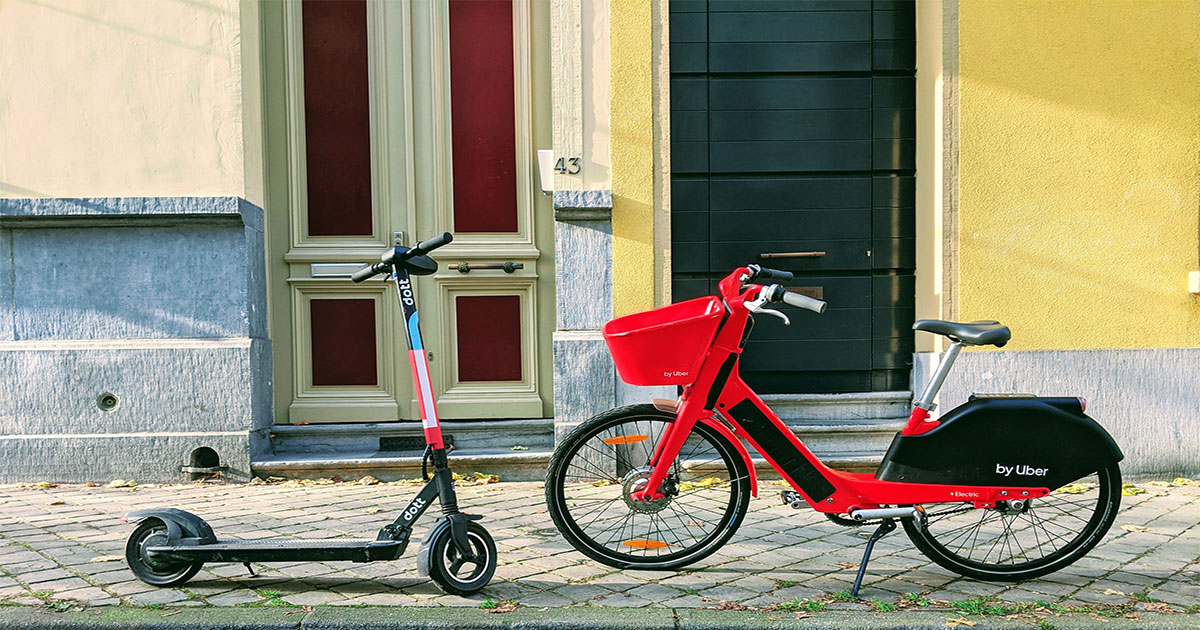
Credit: youmatter.world
Frequently Asked Questions On E-Scooter Benefits
What Are The Benefits Of Electric Scooters?
Electric scooters offer numerous benefits, including eco-friendliness, cost-effectiveness, convenience, and flexible commuting options.
What Are The Pros And Cons Of Electric Scooters?
Pros: Electric scooters are eco-friendly, cost-efficient, compact, and convenient for short-distance transportation. Cons: Limited range, slower speeds, potential for accidents, and dependence on battery charging availability.
Are Electric Scooters Good For Your Health?
Using electric scooters can have positive impacts on your health due to increased physical activity.
Are E-Scooters Safe For Daily Commuting?
Yes, e-scooters are safe for daily commuting as long as proper safety precautions are followed. It is important to wear a helmet, obey traffic rules, and be mindful of pedestrians. E-scooters also have built-in safety features such as lights, brakes, and suspension to enhance rider safety.
Conclusion
E-scooters offer a host of benefits that are hard to ignore. They provide a convenient and eco-friendly way to navigate urban areas, reducing traffic congestion and carbon emissions. With their compact design, they are ideal for short trips and can easily maneuver through crowded streets.
E-scooters are also cost-effective, offering a more affordable transportation option compared to traditional vehicles or ridesharing services. Moreover, they promote a healthy and active lifestyle, encouraging users to incorporate exercise into their daily routine. The availability of e-scooters in cities has the potential to revolutionize transportation, making it more efficient and sustainable for everyone.
As cities continue to embrace this technology, it is important to ensure proper regulations and infrastructure are in place to enhance safety and accessibility. By leveraging the benefits of e-scooters, we can create cleaner, greener, and more efficient cities for future generations to enjoy.

